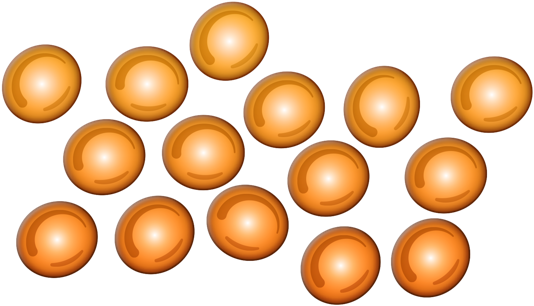What does PNH mean?
affects you
Living with a rare disease like paroxysmal nocturnal hemoglobinuria (PNH) can be a challenge, but the more you know about PNH, the better you may be able to manage it.
What does PNH mean?
P
Paroxysmal
A sudden attack
Even though hemolysis due to PNH is always occurring, symptoms can worsen from time to time. This worsening happens when the immune system is more active, like during an infection or illness.
N
Nocturnal
At nighttime
It was thought that the part of the immune system that causes hemolysis is more active at night, so symptoms like hemoglobinuria are often most obvious in the morning. However, hemolysis is happening at some level in people with PNH all the time, night and day.
H
Hemoglobinuria
Hemoglobin in the urine
Red blood cells (RBCs) destroyed by hemolysis release a dark red protein called hemoglobin. The body gets rid of the hemoglobin in the urine, which turns reddish or very dark. Not everyone with PNH has hemoglobinuria.
How C5 and intravascular hemolysis cause
PNH symptoms
- 1
-
PNH red blood cells (RBCs) are vulnerable to attack by complement protein C5
In PNH, a change in the bone marrow causes some RBCs to be made without important protective proteins on their surface.
Without these proteins, the PNH RBCs are vulnerable to a part of your body’s immune system called complement, including a protein within the complement system called C5.
- 2
-
C5 plays a key role in intravascular hemolysis (IVH)
C5 usually works to destroy disease-causing pathogens like bacteria by poking holes in them.
In PNH, C5 also targets RBCs that are missing protective proteins.
Uncontrolled C5 destroys PNH red blood cells inside blood vessels in a process called IVH.
- 3
-
IVH causes PNH symptoms and other effects
IVH is the main cause of PNH symptoms and can lead to blood clots and other PNH-related effects in the body, such as organ damage.
If you have PNH, you are at constant risk of C5-driven IVH.
IVH=intravascular hemolysis;
RBC=red blood cell.
Did you know?
per million people are diagnosed in the
United States each year.
of race.
What is clone size?
Clone size, which can be measured by high-sensitivity flow cytometry, is the percentage of blood cells in your body that have been affected by PNH and, therefore, do not have the protective proteins that blood cells usually have on the surface.
Many of your blood cells may be normal, but anyone with PNH will have some clones. A larger clone size means you have more blood cells that are missing protective proteins. But even small clone sizes can lead to PNH-related health problems—a small clone size does not necessarily mean that you have “less PNH.” Your clone size may change over time, and symptoms can get worse over time if PNH is left unmanaged. That is why continued monitoring and management are very important.
The difference between RBC and white blood cell (WBC) clone sizes can indicate the extent of hemolysis

PNH CELLS

(TRUE CLONE SIZE)
PNH can be tough to identify, since its symptoms are similar to those of other diseases.
You may not see what’s happening below the surface, and even when you feel fine, lab results can reveal potential problems. The signs and symptoms of PNH may not always be obvious, so it’s important to discuss what you notice with your healthcare provider.
Symptoms you may see
Signs you may not see
Common signs and symptoms of PNH
Symptoms you may see or feel
- Fatigue
- Stomach pain
- Chest pain
- Dark-colored urine
- Shortness of breath
- Difficulty swallowing
- Erectile dysfunction (ED)
Signs you may not see or feel
- Blood clots
- Kidney disease
- Damage to your organs
- Stroke
- Heart attack

How ULTOMIRIS works
Learn how ULTOMIRIS works to provide long-acting control of PNH disease activity
WATCH THE VIDEO
Stay informed
Share your email address to get helpful PNH news and information delivered right to your inbox.
SIGN UPWhat is the most important information I should know about ULTOMIRIS?
ULTOMIRIS is a medicine that affects your immune system and may lower the ability of your immune system to fight infections.
- ULTOMIRIS increases your chance of getting serious meningococcal infections that may quickly become life-threatening or cause death if not recognized and treated early.
- You must complete or update meningococcal vaccine(s) at least 2 weeks before your first dose of ULTOMIRIS.
- If you have not completed your meningococcal vaccines and ULTOMIRIS must be started right away, you should receive the required vaccine(s) as soon as possible.
- If you have not been vaccinated and ULTOMIRIS must be started right away, you should also receive antibiotics for as long as your healthcare provider tells you.
- If you had a meningococcal vaccine in the past, you might need additional vaccines before starting ULTOMIRIS. Your healthcare provider will decide if you need additional meningococcal vaccines.
- Meningococcal vaccines do not prevent all meningococcal infections. Call your healthcare provider or get emergency medical care right away if you get any of these signs and symptoms of a meningococcal infection: fever, fever with high heart rate, headache and fever, confusion, muscle aches with flu-like symptoms, fever and a rash, headache with nausea or vomiting, headache with a stiff neck or stiff back, or eyes sensitive to light.
Your healthcare provider will give you a Patient Safety Card about the risk of serious meningococcal infection. Carry it with you at all times during treatment and for 8 months after your last ULTOMIRIS dose. Your risk of meningococcal infection may continue for several months after your last dose of ULTOMIRIS. It is important to show this card to any healthcare provider who treats you. This will help them diagnose and treat you quickly.
ULTOMIRIS is only available through a program called the ULTOMIRIS and SOLIRIS Risk Evaluation and Mitigation Strategy (REMS). Before you can receive ULTOMIRIS, your healthcare provider must: enroll in the REMS program; counsel you about the risk of serious meningococcal infections; give you information about the signs and symptoms of serious meningococcal infection; make sure that you are vaccinated against serious infections caused by meningococcal bacteria, and that you receive antibiotics if you need to start ULTOMIRIS right away and are not up to date on your vaccines; give you a Patient Safety Card about your risk of meningococcal infection.
ULTOMIRIS may also increase the risk of other types of serious infections, including Streptococcus pneumoniae, Haemophilus influenzae, and Neisseria gonorrhoeae. Your child should receive vaccines against Streptococcus pneumoniae and Haemophilus influenzae type b (Hib) if treated with ULTOMIRIS. Certain people may be at risk of serious infections with gonorrhea.
Who should not receive ULTOMIRIS?
Do not receive ULTOMIRIS if you have a serious meningococcal infection when you are starting ULTOMIRIS.
Before you receive ULTOMIRIS, tell your healthcare provider about all of your medical conditions, including if you:
- have an infection or fever
- are pregnant or plan to become pregnant. It is not known if ULTOMIRIS will harm your unborn baby.
- Pregnancy Registry: There is a registry for pregnant women who take ULTOMIRIS to check the health of the pregnant mother and her baby. If you are pregnant or become pregnant while taking ULTOMIRIS, talk to your healthcare provider about how you can join this registry or you may contact the registry at 1-833-793-0563 or www.UltomirisPregnancyStudy.com to enroll.
- are breastfeeding or plan to breastfeed. It is not known if ULTOMIRIS passes into your breast milk. You should not breastfeed during treatment and for 8 months after your final dose of ULTOMIRIS.
Tell your healthcare provider about all the vaccines you receive and medicines you take, including prescription and over-the-counter medicines, vitamins, and herbal supplements which could affect your treatment.
If you have PNH and you stop receiving ULTOMIRIS, your healthcare provider will need to monitor you closely for at least 16 weeks after you stop ULTOMIRIS. Stopping ULTOMIRIS may cause breakdown of your red blood cells due to PNH. Symptoms or problems that can happen due to red blood cell breakdown include: drop in your red blood cell count, tiredness, blood in your urine, stomach-area (abdomen) pain, shortness of breath, blood clots, trouble swallowing, and erectile dysfunction (ED) in males.
What are the possible side effects of ULTOMIRIS?
ULTOMIRIS can cause serious side effects including infusion-related reactions. Symptoms of an infusion-related reaction with ULTOMIRIS may include lower back pain, stomach (abdominal) pain, muscle spasms, changes in blood pressure, tiredness, feeling faint, shaking chills (rigors), discomfort in your arms or legs, or bad taste. Stop treatment of ULTOMIRIS and tell your healthcare provider right away if you develop these symptoms, or any other symptoms during your ULTOMIRIS infusion that may mean you are having a serious infusion-related reaction, including: chest pain, trouble breathing or shortness of breath, swelling of your face, tongue, or throat, and feel faint or pass out.
The most common side effects of ULTOMIRIS in people treated for PNH are upper respiratory tract infection and headache.
Tell your healthcare provider about any side effect that bothers you or that does not go away. These are not all the possible side effects of ULTOMIRIS. For more information, ask your healthcare provider or pharmacist. Call your healthcare provider right away if you miss an ULTOMIRIS infusion or for medical advice about side effects. You may report side effects to FDA at 1-800-FDA-1088.
INDICATION
What is ULTOMIRIS?
ULTOMIRIS is a prescription medicine used to treat adults and children 1 month of age and older with a disease called Paroxysmal Nocturnal Hemoglobinuria (PNH).
It is not known if ULTOMIRIS is safe and effective in children younger than 1 month of age.
Please see the full Prescribing Information and Medication Guide for ULTOMIRIS, including Boxed WARNING regarding serious meningococcal infections.